Chameleons are exciting, unique, and wonderful animals that are commonly kept as pets. With their opposable digits, strong insect-catching tongue, color-changing skin and even independently moving eyes, there is never a dull day keeping a chameleon! Every pet whether it is a cat, dog, rabbit, or lizard needs the right environment to live a happy and long life.
From food to the environment there are many things to consider. One aspect of this enrichment is different types of plants for chameleons which can liven up your tank and also help your animal enjoy its life with you!
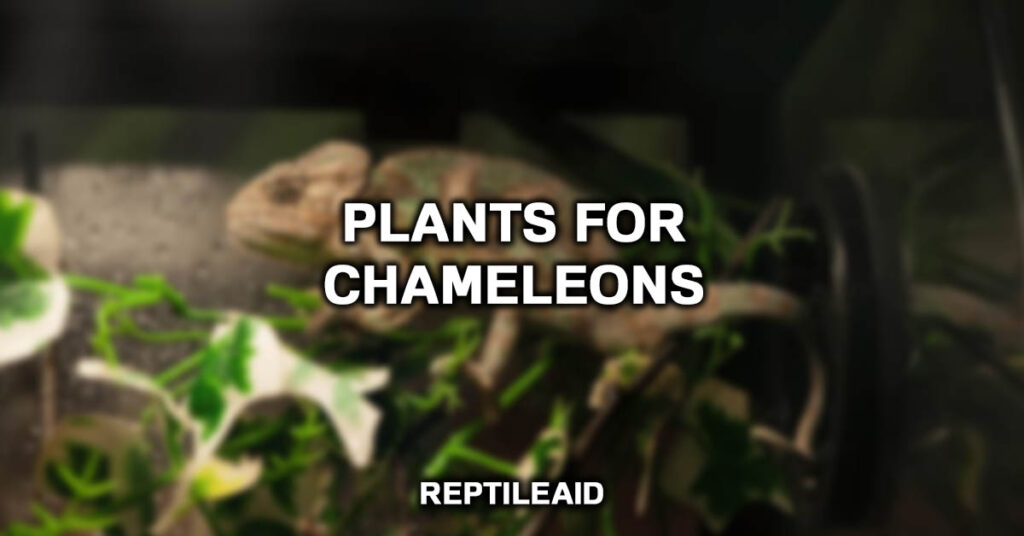
Why are Plants Considered Important in a Chameleon’s Habitat?
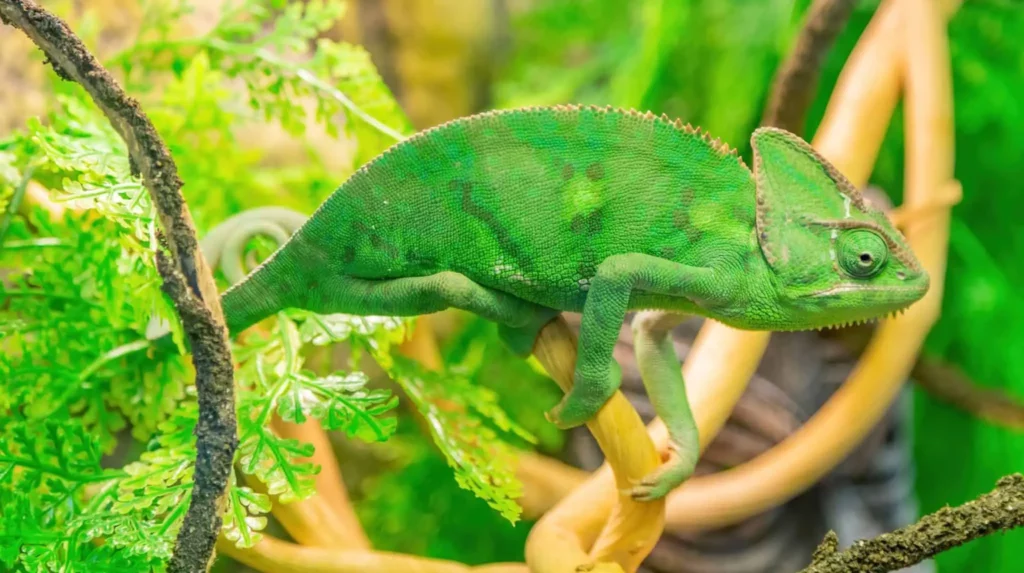
Although many artificial plants these days can look very realistic and give the desired aesthetic effect of plant life, real plants have many more hidden benefits that you may not have considered. Such benefits of live plants to a chameleon’s habitat are:
- Humidity – as in the world’s atmosphere, plants help to maintain a chameleon-suitable level of moisture in their tank
- Shelter – plants provide some natural places for a chameleon to hide, helping them to feel safer and more secure within their vivarium
- Air quality – again, as per the world’s climate in general, plants help clean the air, meaning the air quality is healthier for you chameleon
- Enrichment – chameleons are natural climbers in their wild habitat so providing actual and the correct plants, means this behavior can be expressed in your home
11 Plants that are Suitable for Chameleons
1. Wax Begonia
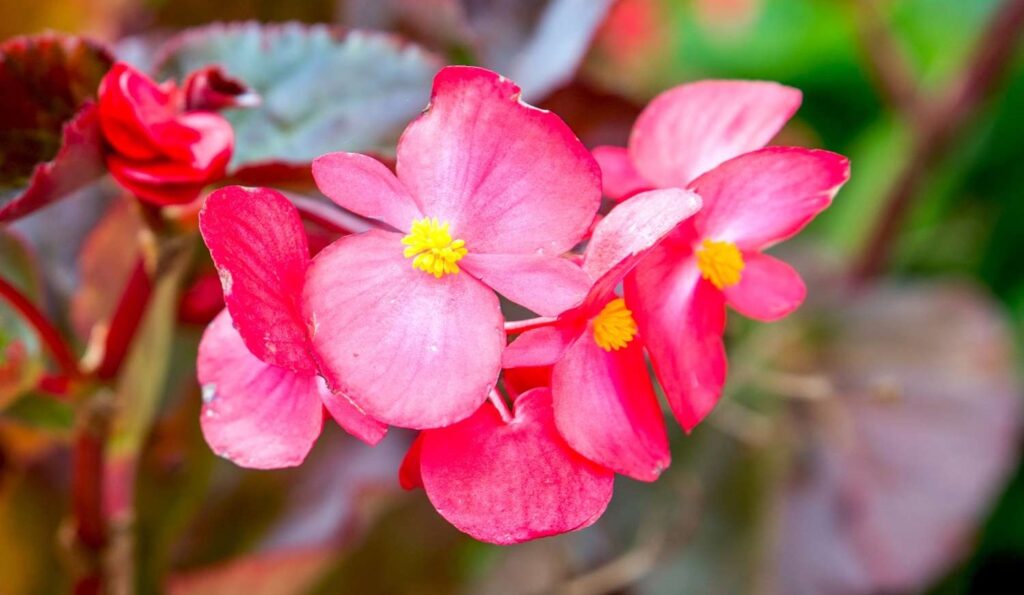
This beautiful lacy pink flower with a yellow center is most commonly seen as a bedding plant in gardens, but Wax Begonias are also great plants for chameleons. They can live up to 4-5 years and are ever-blooming so are attractive all year round, especially when kept indoors (as they become true perennials).
Wax Begonias are not too big for a chameleon’s tank as they have a compact, mounded shape, measuring only 6-12 inches with trimming. Begonias are a group of plants that, unusually, prefer being root-bound. This means they seem to do better when they aren’t repotted very often, so there is less work to keep up with to maintain your chameleon’s environment.
Originally from South America, they are well accustomed to warm and humid environments as shown through their waxy leaves which give them their name. This means they are perfect plants for chameleons in their vivariums with artificial sunlighting.
In fact, they struggle with drought or extreme cold, neither of which will be a problem in a chameleon enclosure. When caring for a young Wax Begonia plant, it is important not to let it dry out so frequent watering is required.
They can take their time to flower, requiring months until blooming from seed. When it is fully grown, Wax Begonias actually prefer having their soil slightly dry to decrease the watering frequency with age. Additionally, a pot with excellent drainage will prevent root rot which is a nuisance that is particularly common in Begonias.
In terms of soil for Wax Begonias, using a basic houseplant mix as long as it is light and airy, is perfect.
2. Rubber Tree
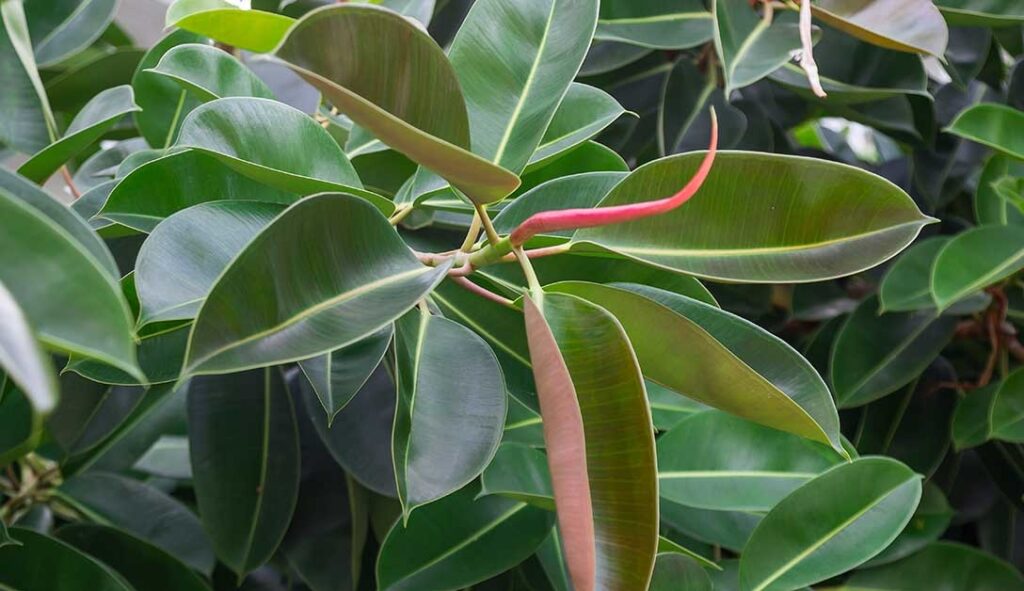
As a member of the Ficus (fig) family, this plant has various quirks, including being the source of natural rubber. This bouncy plant is an adaptable flowering tree, which, as the name suggests, can get quite big (up to 50-100 feet tall!) so it is not ideal for most home chameleon habitats.
However, common varieties reach only 10 feet, and dwarf rubber trees are available that only grow to 2 feet tall, either of which may be suitable for your dream chameleon environment. The rubber tree is generally low maintenance, but keeping it on top of pruning the tree will help to keep its size a little more under control.
The sap from the rubber tree can also be mildly toxic, so any excessive consumption by your chameleon might mean it is time to remove your rubber tree from its reach. These plants are easy to propagate from stem cuttings as in the wild they grow aerial roots to reproduce.
Despite originating from Brazil, the rubber tree will wilt under conditions that are too hot or too bright, meaning a distance from your chameleon’s sun lamp is necessary. However, a sign of too little light is leaf dropping, so be sure to keep a good balance! These plants love humidity but they dislike being too damp preferring to be kept damp, not drenched.
Quick Fact: A sign of overwatering to look out for is yellow leaves, so if this is seen you ought to adjust your watering schedule to stop this from happening.
Good drainage from the pot will also help, and the pot should be a snug fit around the roots, being just a few inches bigger than the plant. A decent-quality soil blend designed for houseplants is usually perfect for your chameleon’s rubber plant.
3. Jade Plant
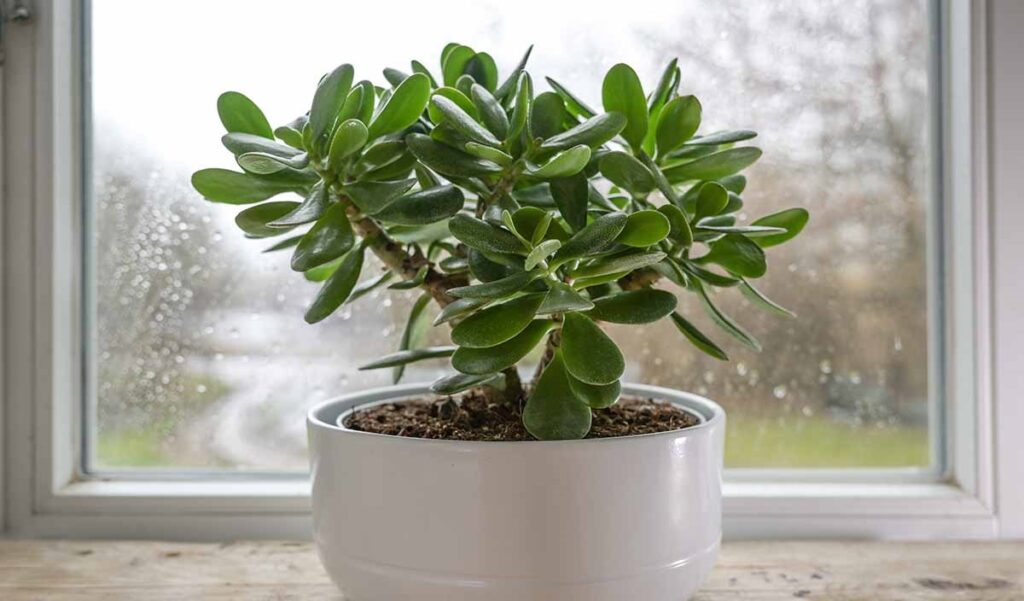
Climbing up the woody stems of a Jade Plant will become your chameleon’s favorite activity if you put one in their home. These fleshy succulents need regular trimming to keep them at bay, although not allowing an extensive root system (by minimizing the number of repotting) will all keep them at a smaller size.
Several hours of direct UV sunlight are needed every day for Jade Plants and they don’t need much water, especially during winter, due to being a succulent. Any water used should be distilled as Jade Plants are particularly susceptible to the sodium found in tap water.
The soil is fine to dry out between waterings so the Jade Plant is perfect for those chameleon owners who are a little forgetful of their leaved friends.
4. Bromeliads
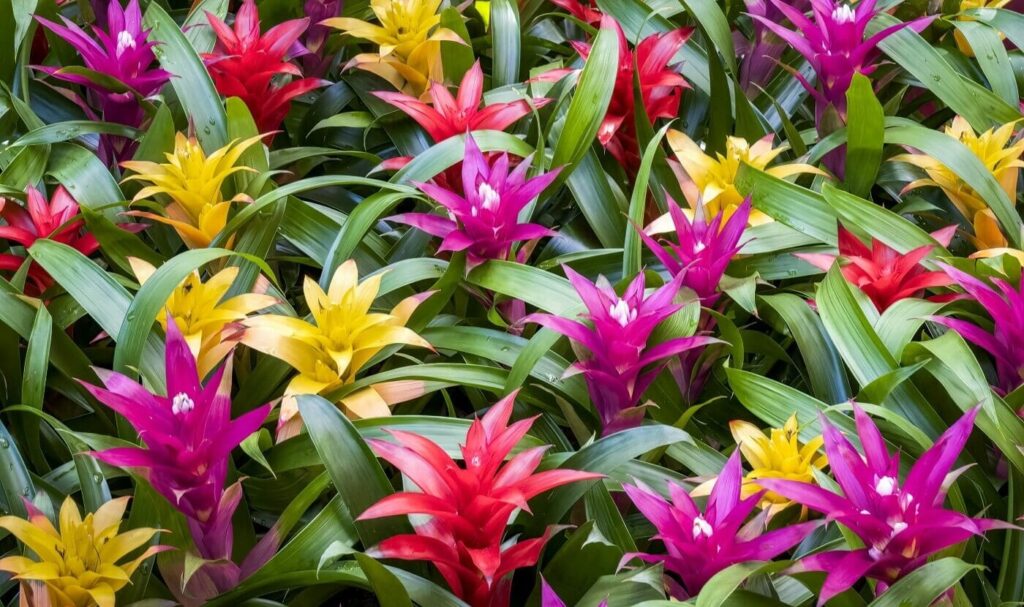
Bromeliads are related to pineapples, which is made obvious by their tropical appearance. Although they only flower late in their lifetime, the leaves of bromeliads have a vibrant hue that is sure to insert a jet of color into your home vivarium for your chameleon, which will have endless pleasure climbing up the stems.
With no pruning required, there is little maintenance, although one or two cuttings can be taken for propagation if required!
In need of much heat and UV light. Bromeliads are probably a very good choice for a tank, but they do need a level of humidity and it is essential not to overwater them (once a month is plenty). Distilled water is preferred as some Bromeliads are sensitive to minerals in tap water.
A nutrient-rich soil blend for succulents will let your plant thrive in its chameleon habitat and repotting isn’t required for years as their roots develop slowly.
5. Golden Pothos
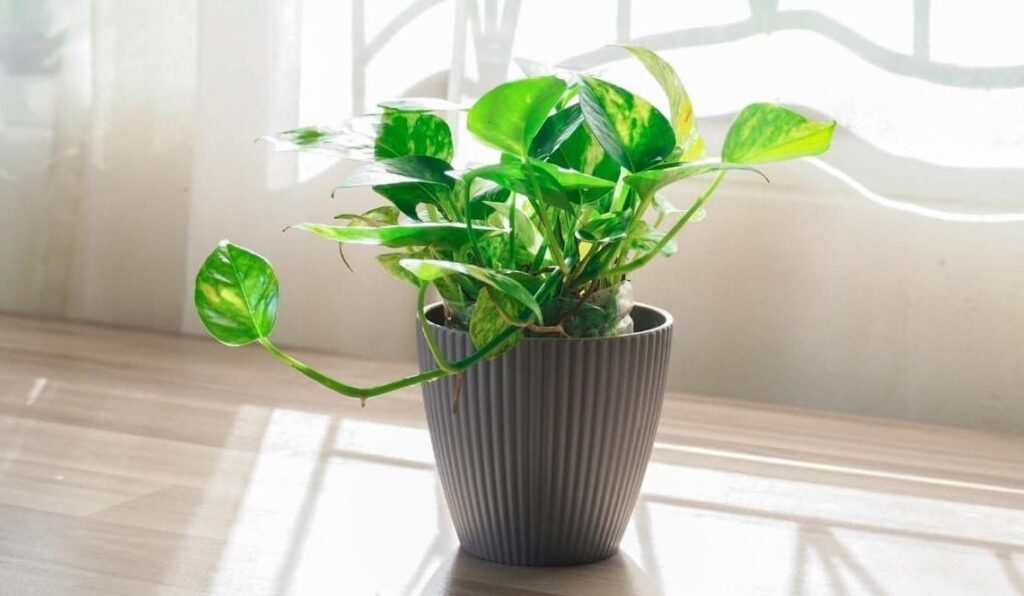
Also known more commonly as Devil’s Ivy, the Golden Pothos is nearly impossible to kill, making it the perfect evergreen installation into any chameleon’s habitat. Its attractive bright leaves form on vines. The golden streaks on the leaves which give the plant its name are dependent on the amount of light the plant is exposed to.
At best, the vines can grow to 66 feet tall, so trimming them is useful to encourage more density, which also makes it easier to take multiple cuttings for propagation. The only downside seems to be that the Golden Pothos is toxic to cats and dogs, so some care may be needed if you are adding this plant into your chameleon’s home!
As mentioned above, it is nigh-on impossible to kill the Golden Pothos. It thrives in almost any condition, as long as they are not too extreme. They tolerate most lights, don’t need deep watering as have shallow roots, and even in long periods of no water they survive by reducing their leaf size, but will rapidly spring back to full size with a bit of water.
Quick Fact: A basic houseplant mix with adequate drainage allows the Golden Pothos to thrive, so are a perfect plant to add to your chameleon’s vivarium.
6. Dracaena Compacta
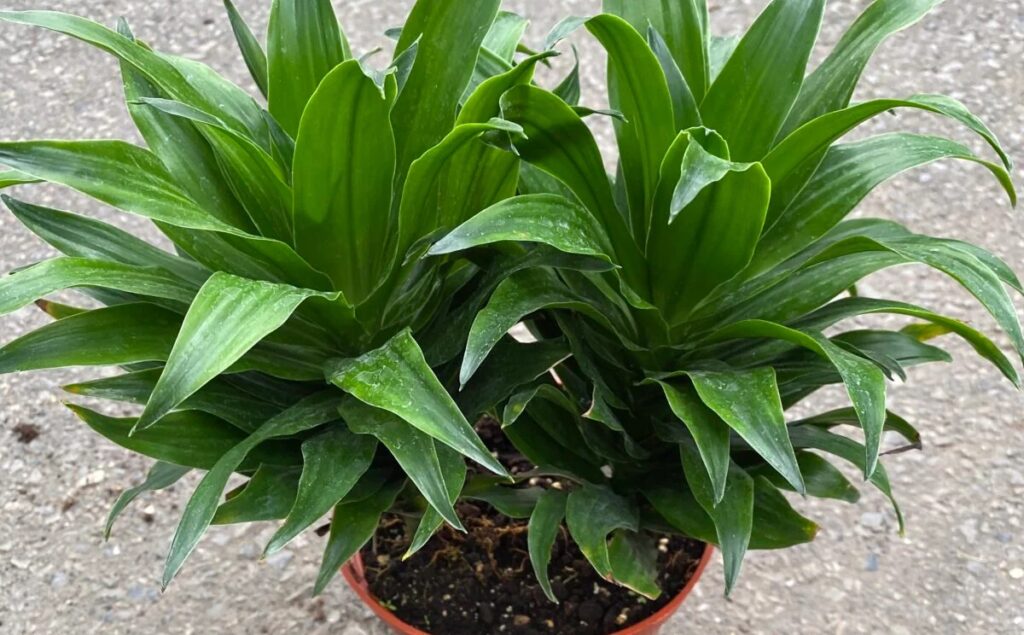
The Compact Dragon Tree or Dracaena Compacta is one of the most popular plants for chameleons and it’s clear why it is compact as per the name, robust (for any chameleon climbing adventures), and almost bonsai-like in appearance. This plant is also slow growing, making it a perfect plant for a vivarium.
However, this plant is slow to tell you that things are wrong until it is too late so it is important to look after these plants correctly. There are also some reports of toxicity to pets, so again, caution is advised if adding this plant to your chameleon’s abode.
These plants can do well in areas with low light, although they are not as shade-loving as they are famed to be and will show signs of stress without enough natural light! Dracaenas need good pot drainage and light soil, as they are one of the few plants for chameleons that can be left to dry out between waterings!
7. Weeping/Benjamin Fig
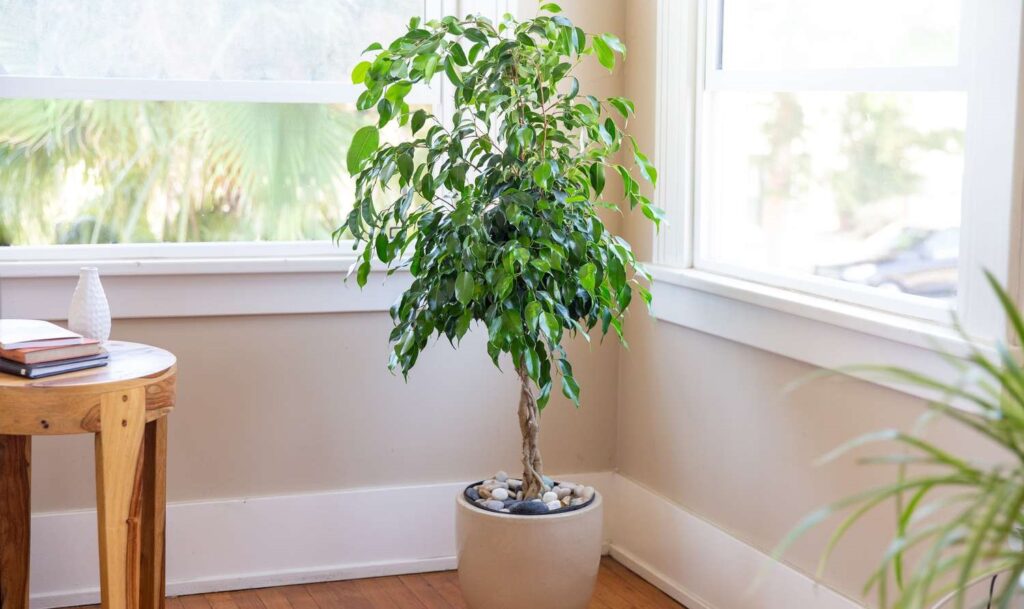
Another member of the Ficus species suitable for chameleon habitats, and the most likely to be found there, is the Weeping (or Benjamin) Fig. These are elegant and hardy, and much loved by many, so much so that they have been made the official tree of Bangkok.
In the Weeping Fig’s natural habitat, its small orange-red fruits are loved by local birds, although the sap again can be an irritant to your chameleon, so care is advised. Also, the Weeping Fig is the third most common cause of indoor allergies (following dust and pets) so owners (or chameleons) with any respiratory difficulties should avoid this plant.
Sadly, like the Rubber Tree, the Weeping Fig can frequently grow too big for a home chameleon environment, growing to up to 60 feet outdoors, but a more reasonable 3-6 feet indoors. Again, various types are sold, so one might best fit your chameleon habitat’s needs, although the bonsai version might be a little on the small side!
A moderate level of natural light and water is required for the Weeping Fig to flourish. Watering should be performed when the top inch of soil is dry, and again, like the Rubber Tree, if the Weeping Fig is lacking water then it will lose its leaves. This fig plant doesn’t do well with getting too hot, so some distance from any sun lamp in your chameleon’s vivarium will have to be given.
The Weeping Fig doesn’t tolerate being relocated too often so it’s best to leave it where it is if it is happy.
8. Yucca
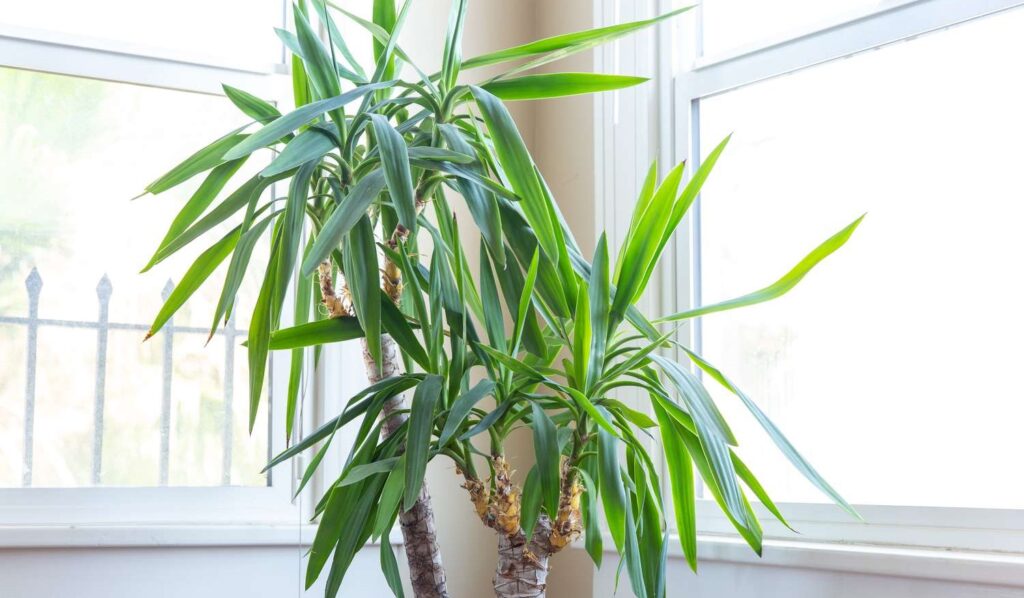
Despite the frankly disgusting name of this plant, the Yucca is actually a cool wacky-looking plant, and its flower is the state flower of New Mexico not so ‘yuck-a’ after all! It will really give your chameleon something solid to climb up (as is part of their natural behavior), as it has thick trunks and narrow leaves which fan out.
These leaves are a powerhouse in nature, with the plant being one of the best for cleaning the air. However, they are also very sharp-edged, so waiting under your chameleon as an adult before introducing this plant is the safest way to go. Yucca plants usually come either as a tree with a single stalk with one fan of leaves or as a shrub with several of these.
The Yucca is usually less than 20 feet in height, and pruning can tame it nicely, so is the perfect size for your indoor vivarium for your chameleon.
Yuccas prefer partial shade, with a short period of bright light per day, although they can tolerate more light than this, this may result in them turning yellow, so keep an eye out! This plant needs a pot with excellent drainage and light soil, as it is susceptible to root rot if it is overwatered.
Propagation can be done through various methods, including suckers, cuttings, or through seeds, so the Yucca is easy to add it your chameleon’s habitat.
9. Chinese Hibiscus
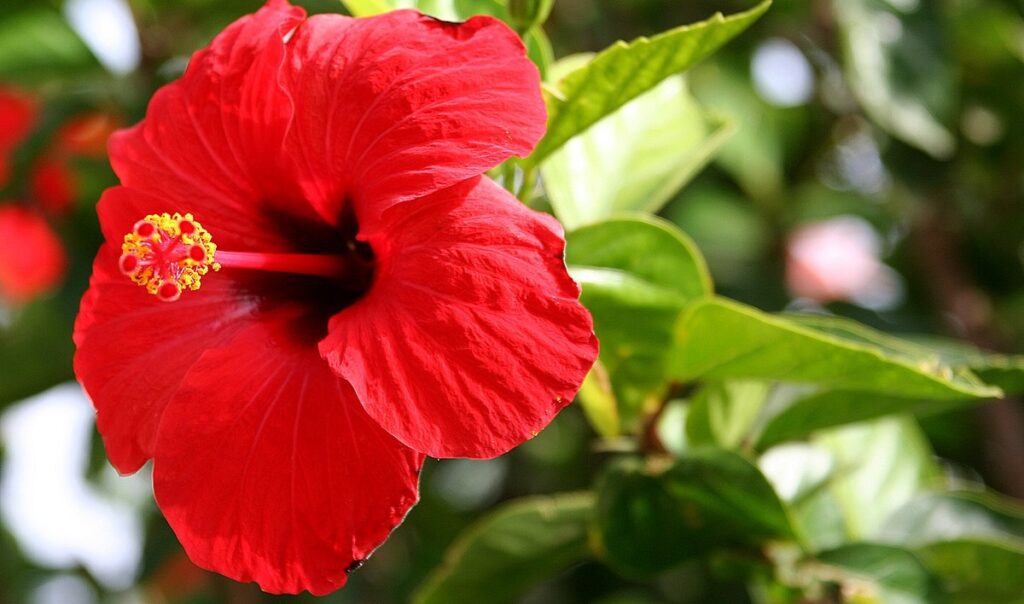
The famous brightly colored flowers of Hibiscus plants will liven up any vivarium, although they are largely notorious for being difficult to grow indoors. One species is the exception, however, as the Chinese Hibiscus has beautiful red flowers in summer and autumn without the high upkeep.
These flowers are used in salads in the Pacific Islands and are often part of a hair care routine. Growing to only 8-16 feet tall, they are the ideal size for an indoor tank, but aggressive trimming is required annually to keep the Chinese Hibiscus at an appropriate height and growing at an appropriate rate.
The Chinese Hibiscus requires adequate light, which might be more than can be delivered in your vivarium. Watering should be generous, although allowing the topsoil to be dry between waterings is recommended. This plant can be quite picky about being root bound, requiring repotting in basic houseplant soil relatively frequently.
10. Nasturtiums
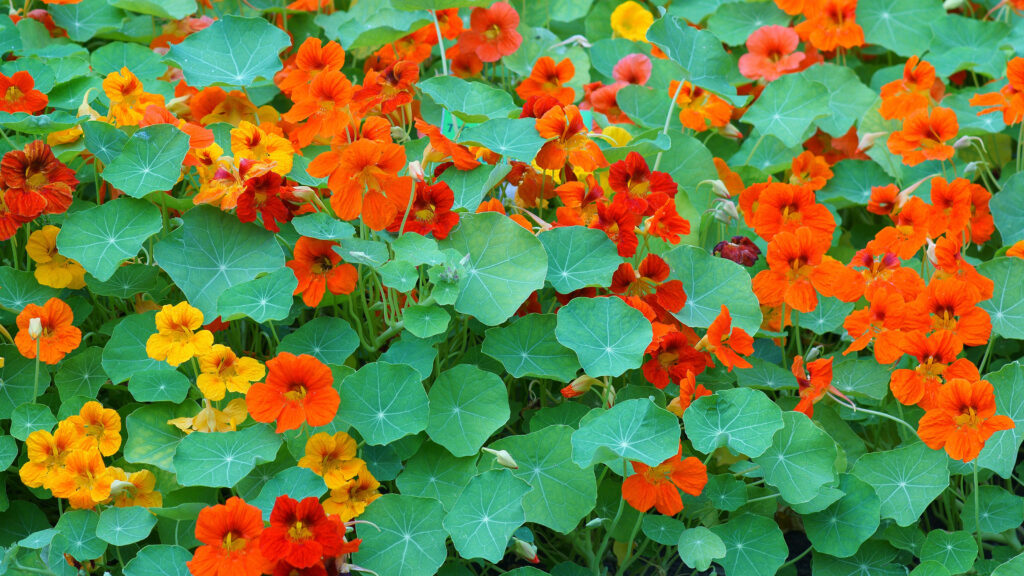
These plants with their perky and vibrant leaves and brightly colored flowers are sure to make your vivarium a happy home for your pet chameleon, especially as the flowers are also tasty for them. Nasturtiums are climbers and so the complex web of vines created in your vivarium will surely enrich the habitat of your chameleon.
These plants need partial UV sunlight from your sun lamp inside your chameleon’s tank. In terms of watering, nasturtiums need to have their soil kept damp, meaning watering it once or twice a week.
11. Spider Plant
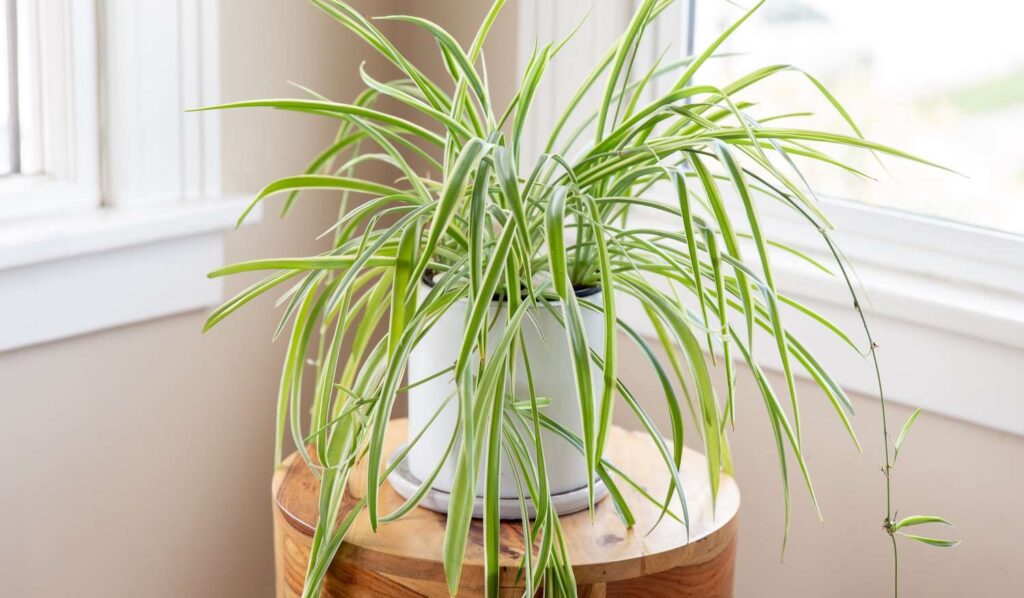
A classic houseplant, the spider plant also makes a great addition to any home’s vivarium. Variegated leaves mean this plant is sure to stand out and the fact they are easy to grow is just a bonus. When mature, spider plants will produce white flowers if they are kept happy enough. They are prolific reproducers by creating pups that can be cut off to create a new plant each.
Quick Fact: Due to this voracity, Spider Plants need to be repotted about once a year, but they are easy to look after for your chameleon apart from that.
Low-intensity light is the way to go for Spider Plants, as they will turn brown or drop leaves if they get too much UV. They don’t respond well to drying out or being soaked in water, and good drainage with houseplant soil is critical for a long and healthy life.
Additional Care Tips for Plants for Chameleons
Each plant listed above has its own specific wants and needs, as already mentioned, but broader care for all your plants is also important. This consists of:
- Adding supplements to the soil if a plant is missing a vital nutrient – just make sure that any additions are non-toxic to chameleons!
- Being mindful of heat sensitivities and requirements when arranging your plants in relation to your heat lamp
- Regularly wash all your plants with fragrance and dye-free dish soap to make your chameleon’s home more hygienic and help your plants to stay healthy
- Creating a balance between plant-filled space and open space in the tank as it is your chameleon’s habitat too!
- Trimming any yellow/brown leaves with a clean cut (any other kind will open the plant to infections or bugs)
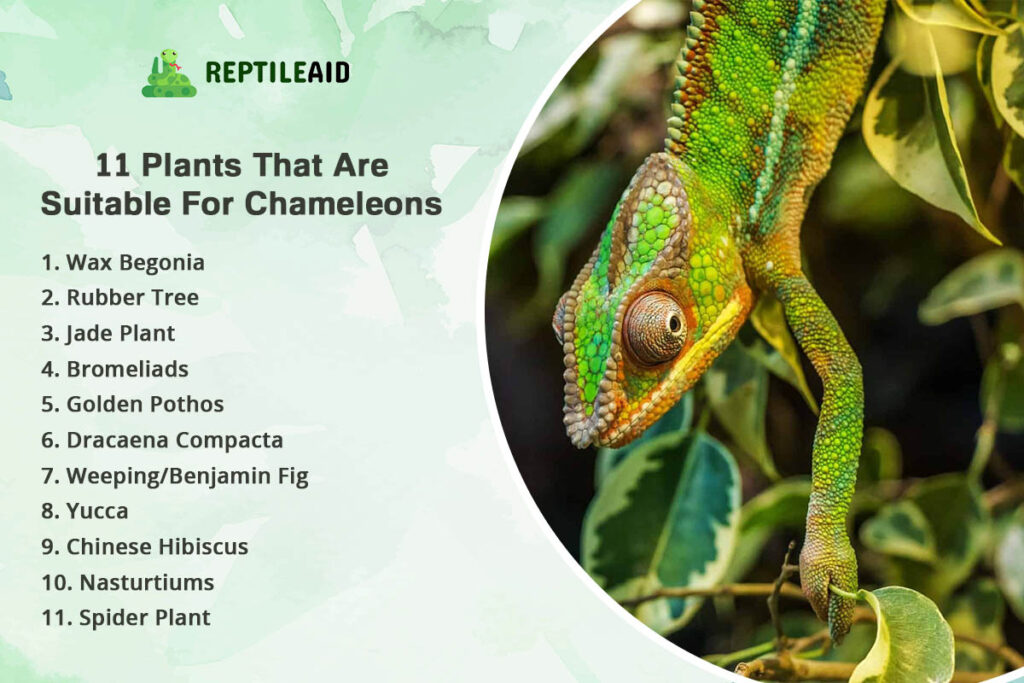
Common Mistakes in Plant Care
If any of your plants are developing brown-tipped leaves, yellow leaves, dried-out leaves, bugs, or fungus, there is something going wrong. This could be due to:
- Watering – overwatering is the most common cause of problems in plants for chameleons but underwatering is also common. Every plant needs a different amount of water so make sure to have an appropriate watering schedule for each individual
- Soil – an incorrect soil type can cause inappropriate drainage or nutrients
- Light – too much or too little, again consider the individual plant’s needs
There are many different plants that are suitable as plants for chameleons in their tanks. Each has its own requirements with regard to light watering, soil, drainage, and pruning.
Some may be more appropriate for you and your chameleon than others, but you can be sure to find at least one or two which will work to give your pet some climbing and a place to hide, as well as clean the air and correct humidity levels. If you have any questions, feel free to leave a comment below!
